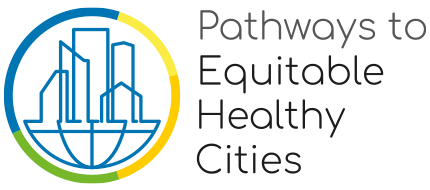Vancouver
Work in Vancouver is led by Pathways consortium members from the University of British Columbia and Simon Fraser University and involves collaborations with the Canadian Urban Environmental Health Research Consortium (CANUE). We work with partners from local and national government agencies and civil society organisations to look at different aspects of inequalities and to identify areas of contemporary and emerging policy interest.
In Canadian cities, the gap between wealthy and poor neighbourhoods is widening. But there is little data on what is driving this widening inequality. We examine change in neighbourhood incomes, using data at census tract level, across Vancouver, Toronto and Montreal over a 15-year period, to understand what is driving rising inequality between neighbourhoods. We describe the characteristics of places that are pulling ahead, those that are stagnant or falling behind to explore how neighbourhood socioeconomic (labour force composition, unemployment, education levels, etc.) and environmental (industrial zoning, parks, greenness, etc.) factors affect the spatial distribution of inequality.
Read more about the work of the Pathways Poverty and Inequality working group.
Although the average life expectancy is high in Vancouver, little was known about the variations within the city and the contributing diseases and injuries. Within-city local level data are needed to better understand geographical health inequalities as a first step in identifying and acting upon their determinants. We have characterised inequalities in mortality across 368 census tracts in Metro Vancouver using mortality data from over two decades. We use small area estimation procedures to estimate inequalities in life expectancy and 20 causes of mortality with further cause differentiation for cancers and cardiovascular diseases. In doing so, we identify clusters of diseases that are responsible for inequalities and assess changes over time to document emerging trends. The findings support more in-depth analysis and prioritisation of policies and programs to advance urban health equity.
Check our interactive map on life expectancy in Metro Vancouver.
Read more about the work of the Pathways Health Outcomes working group.
As cities grow, managing the population growth, through expansion versus densification, is essential for health and sustainability. Without incorporating risks and benefits in planning and land use guidelines, planners may direct growth without factoring in impacts on population health and equity. To address this, we combine data on population density, health measures and deprivation in Metro Vancouver to examine trade-offs and optimal ranges of population density for health to help answer the planning-related question: is there an optimal balance of density for health and health equity?
Play is a fundamental determinant of healthy child development and wellbeing, yet young children’s access to space for play has often been overlooked in the planning and design of urban built environments. Currently, there is no systematic way to evaluate the quality, availability and accessibility of neighbourhood space for young children’s play across neighbourhoods within Canadian cities. We examine the characteristics of neighbourhood built environments that influence children’s outdoor play, and how the quality and distribution of playable space varies within Canadian cities. We are developing a scalable, geospatial playability metric to be applied to neighbourhoods in all major cities in Canada, using neighbourhood-level data on greenspace, parks, informal space, transportation infrastructure and other built environment factors that influence children’s outdoor play. This metric will be made available to cities and the public to inform urban planning and policy and provide cities with a tool to assess needs and prioritize action for change.
Read more about the work of the Pathways Housing and Neighbourhood working group and Health Outcomes working group.
We are investigating the potential effects of road pricing in Metro Vancouver on transportation and health equity. Our goal is to understand how transportation-related health benefits and burdens, including access to services, road traffic collisions, and air pollution are distributed throughout the region and across population subgroups. We also quantify how the implementation of road pricing will affect the distribution of these benefits and burdens.
Read more about the work of the Pathways Transport and Mobility working group.
Related publications
Health & Place, vol. 83, pp. 103081, 2023.
EPJ Data Science, vol. 12, iss. 1, pp. 19, 2023.
Journal of Urban Health, vol. 100, iss. 1, pp. 118-150, 2022.
Predicting air pollution spatial variation with street-level imagery
Remote Sensing, vol. 14, iss. 14, pp. 3429, 2022.
Health & Place, vol. 76, pp. 102844, 2022.
